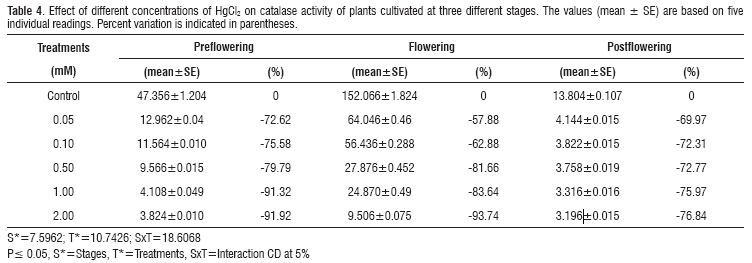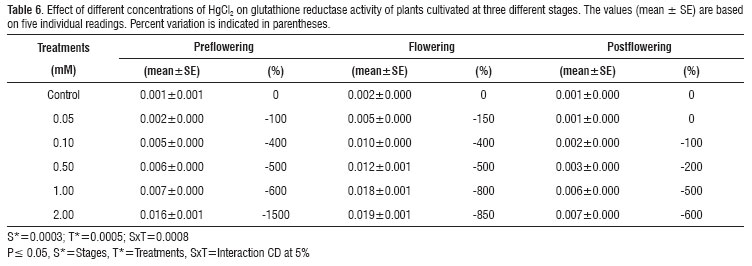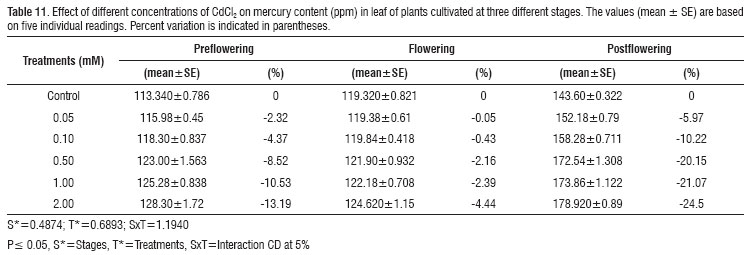Cadmium and Mercury induced varying responses in Abelmoschus esculentus L. in relation to enzymes (ascorbate peroxidase (APX, 1.11.1.11), catalase (CAT, 1.11.1.6), glutathione reductase (GR, 1.6.4.2) and superoxide dismutase (SOD, 1.15.1.1) which are most related to the levels of Hg and Cd applied and concentrations of thiol groups already present or induced upon treatment. In the present investigation varying concentrations of CdCl2 and HgCl2 (0, 0.05, 0.10, 0.50, 1 and 2mM respectively) applied to plant in the soil shows a significant increase in ascorbate peroxidase, glutathione reductase and superoxide dismutase activities, and the respective metal accumulation. It reveals a mechanism for constant detoxification of H2O2 that have to be associated with adaptations and ultimate survival of this plant species during stress conditions. A reduction of catalase activities was observed on exposure to these metals, which is supposedly due to the inhibition of enzyme synthesis. Root length, shoot length, number of leaves showed an enhancement with 0.05 mM CdCl2 dose then a gradual decline with the increase in concentrations. The results indicate that A. esculentus is tolerant to high concentrations of these metals, a property related to a differential activation of its enzymatic antioxidant system, and also reveal that this species has a higher capacity of Cd absorption.
antioxidative enzymes; metals detoxification; reactive oxygen species












